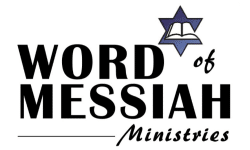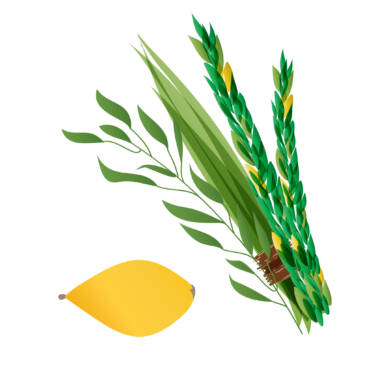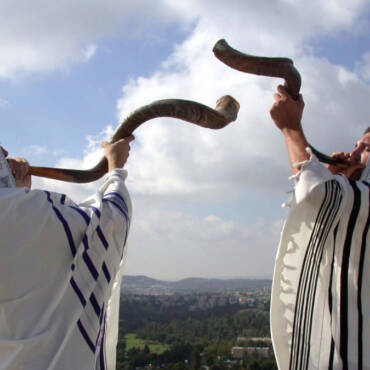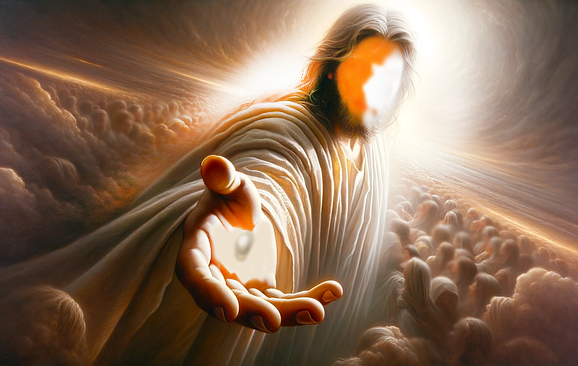Sukkot: The Feast of Tabernacles

By Sam Nadler
Sukkot and the Everlasting Light
When Yeshua was on earth, perhaps the most dramatic and gigantic of the Lord’s Feasts was Sukkot (meaning Booths, or Tabernacles). Each family would live in a temporary dwelling or sukkah to remember and relive God’s protection as they wandered. This eight-day festival was one of three “pilgrim feasts.” All able Israelites were to “appear before the Lord” in Jerusalem. Sukkot traditions developed for the Holy Temple in the city. One such ceremony involved seventy-five-feet high “Golden Candlesticks.”
On the first day of Sukkot, these candlesticks with four bowls and giant wicks, were erected in the “Court of the Women” where the treasury was located. This was a place granting access to all who desired to enter and experience the joy of Sukkot.
We read in the Talmud, the light from those huge candles “lighted all the courtyards of Jerusalem!” Young men would climb up several ladders to light the candle wicks, made from old priestly garments. At the base of the candles “Men of piety and good deeds would dance before them with lighted torches in their hands, singing songs and praises. Levites with harps, lyres, cymbals, trumpets and other musical instruments were there upon the fifteen steps leading down from the court of the Gentiles to the Court of the Women.”
Sukkot and the Light
This celebration would continue for the full seven days; then the lights were extinguished on the eighth day for a holy and solemn assembly (Leviticus 23:36).
Since Sukkot is a harvest festival (23:39), the question might arise: Why did they light these great candles, dancing and rejoicing around them in the Temple? The prophets help us understand its meaning.
The prophet Zechariah forever identified Sukkot with Messiah’s kingdom reign. All the nations, “will go up from year to year to worship the King, the Lord of hosts, and to celebrate the Feast of Booths.” (Zech. 14:16) Sukkot was a harvest celebration. Zechariah teaches that it points to the future when the nations will be as a great harvest of King Messiah.
What do the candlesticks have to do with the kingdom? Looking to that day, the prophets explain, “No longer will you have the sun for light by day, Nor for brightness will the moon give you light… For you will have the Lord for an everlasting light, and the days of your mourning will be over” (Isaiah 60:19-20; Zech 14:6-7).”
In the New Covenant writings John makes mention of these prophecies, looking to the eternal period when the Lord, Himself, is our everlasting light (Rev 21:23; 22:5). In traditional Judaism, this future time is simply referred to as “the world to come” (olam haba) and “the days of Messiah.”
The True Light
We see in those candles the expectation of a time where there will be no other light but the Lord’s. Messiah will be the only light for Israel eternally. The kingdom to which Sukkot points is a time when we will no longer walk in the darkness of sin and spiritual corruption, rather, we will walk in the gladness, salvation and freedom of the Lord’s light.
Moreover, the Messiah of Israel was to go out into the nations of the world!
It is too small that You should be My Servant to raise up the tribes of Jacob and to restore the preserved ones of Israel; I will also make You a light of the nation’s So that My salvation may reach to the end of the earth (Isaiah 49:6).
Thus the rabbis also consistently saw Messiah as the true light of God (Berachot 29a; Peskita Rabbati 161ff; Exodus Rabbah 31:10; Deut. Rabbah 11:10).
At Sukkot, Yeshua went up to the Temple (John 7:3, 37-39; 8), where, the Sukkot pilgrims from around the world had been celebrating joyously for seven days, on the 8th day was (the solemn assembly) and lights from the candles were now extinguished and the Temple was dim.
It was then and there that Messiah spoke “I am the Light of the world; he who follows Me will not walk in the darkness, but will have the light of life” (John 8:12).
These words He spoke in the treasury, as He taught in the temple (John 8:20). By the great extinguished candles, at the treasury in the Court of the Women he declared, Messiah is the Light.
He is the Personal light of God, for He said, “I am…” He alone is the revelation of God’s glory. He is the Perpetual Light of God, Yeshua professed to be the only inexhaustible source of spiritual nourishment. The candlesticks were to be extinguished after the feast, but His light would remain. He is the Perfect Light of God, by which eternal direction is established for our lives. He is the Pure Light of God, the genuine light by which truth and falsehood can be distinguished (John 1:9). He is the Powerful, “the Light of the World,” able to make the enlightening difference for everyone. Regardless of culture or heritage, all people need His light.
This light must be applied! Marriages need spiritual insight; child-rearing needs discernment; businesses need enlightened standards; and in this world of temptations we need spiritual guidance. In anticipation of His glorious Kingdom, may you have the light of life. This feast of Sukkot may you live out His Kingdom, shining the light of Messiah in a darkened world.



